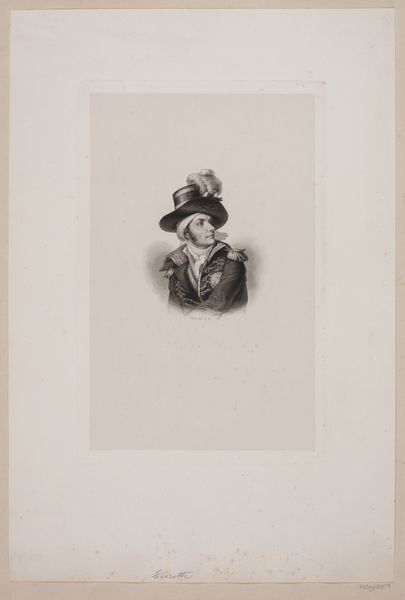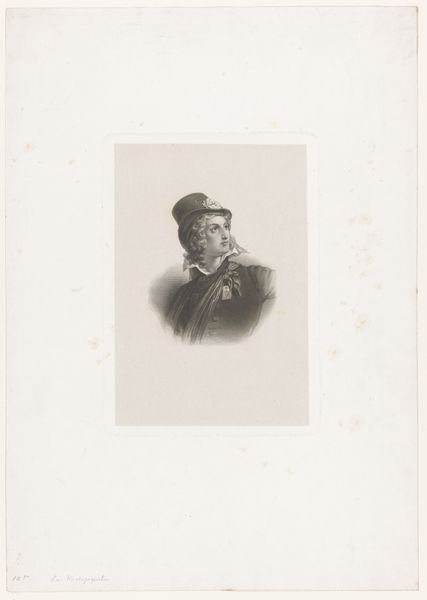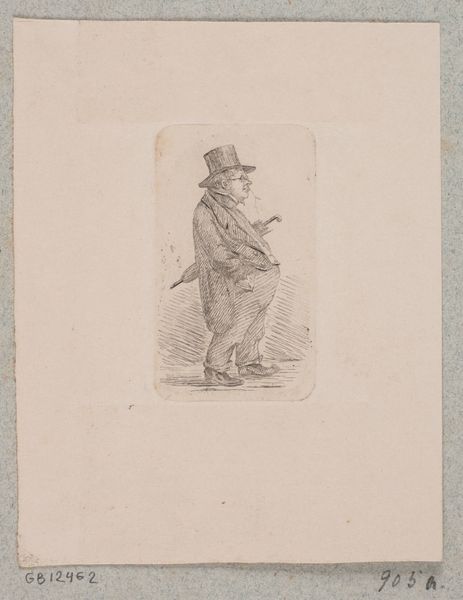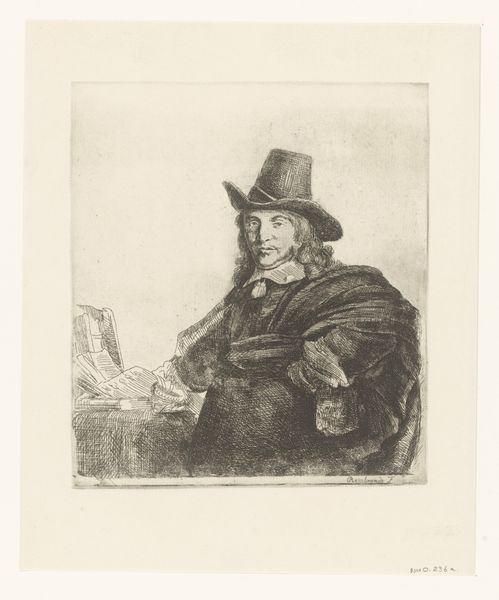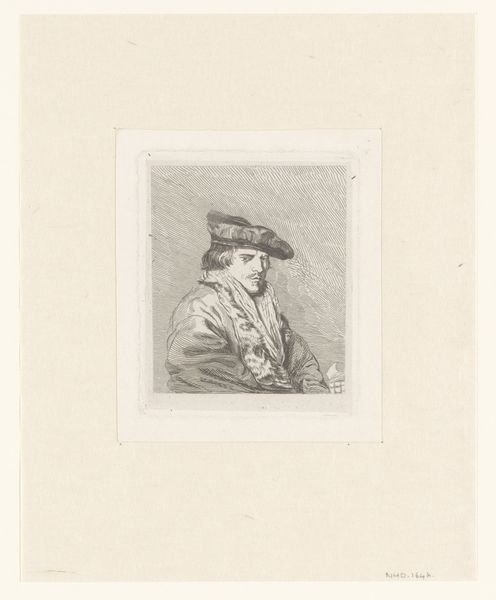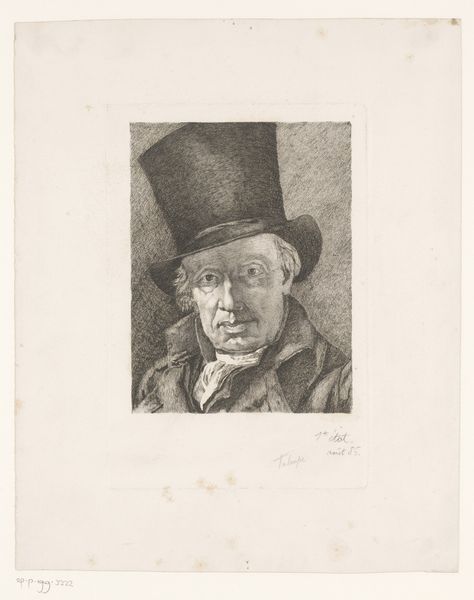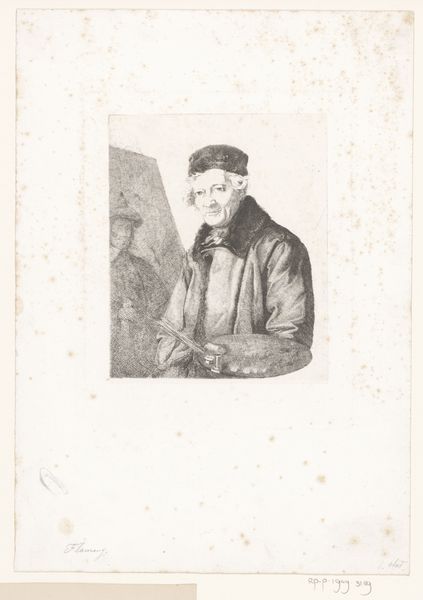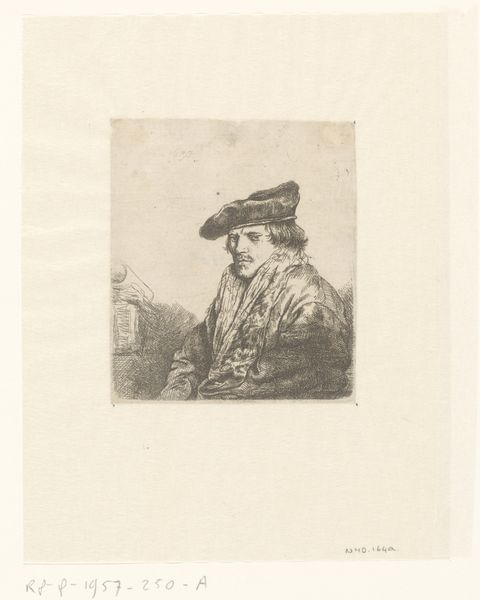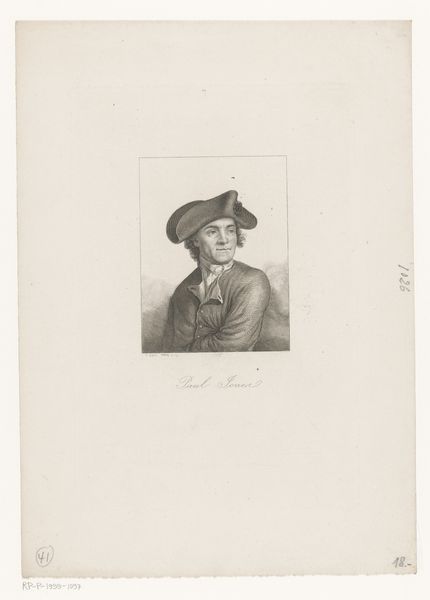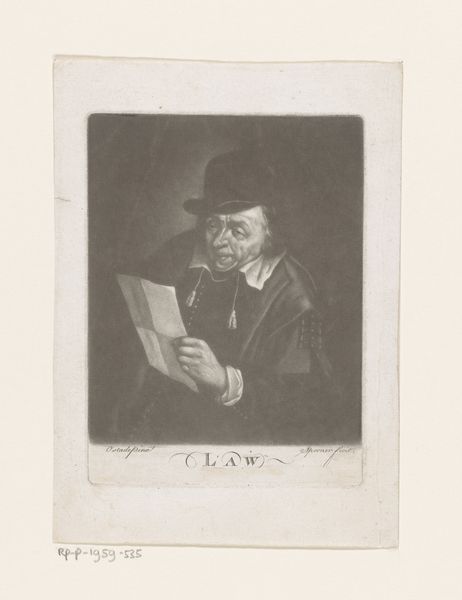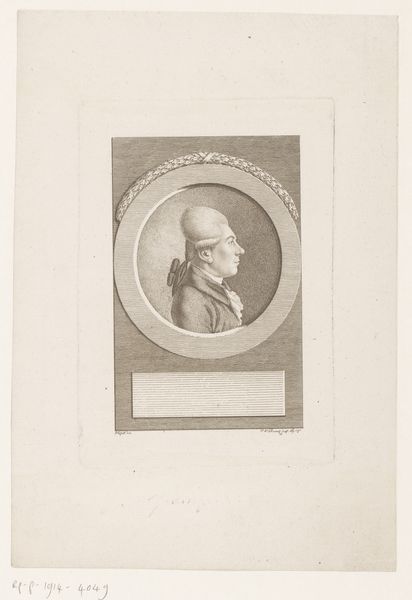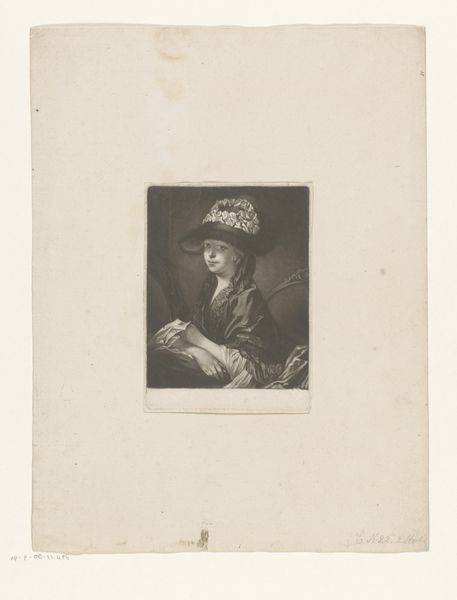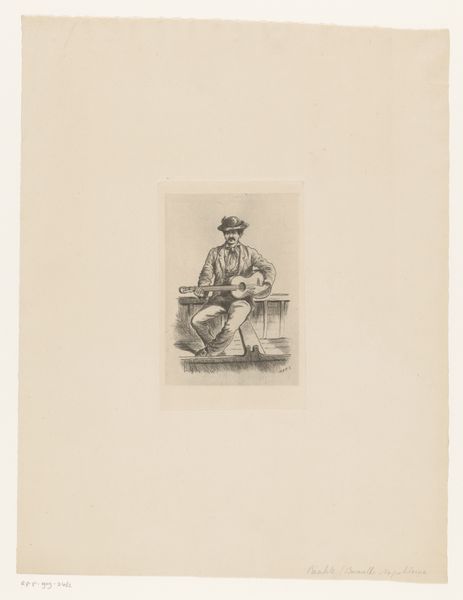
drawing, print, graphite, engraving
#
portrait
#
pencil drawn
#
drawing
# print
#
pencil sketch
#
old engraving style
#
pencil drawing
#
graphite
#
history-painting
#
engraving
#
realism
Dimensions: height 220 mm, width 175 mm
Copyright: Rijks Museum: Open Domain
Editor: This is Pietro Kobke Krohn's "Portrait of his father F.C. Krohn," made sometime between 1850 and 1905, using graphite and engraving techniques. It strikes me as quite a personal and intimate depiction. What do you see in this portrait, from a historical perspective? Curator: I see a fascinating glimpse into 19th-century Danish society and the role of portraiture within it. The detailed engraving, depicting Krohn senior in the act of enjoying his pipe, speaks to the emerging bourgeois class and their desire for personalized representation. It signifies leisure and respectability. How do you think the act of portrayal itself reinforces certain social hierarchies? Editor: That's interesting. I guess it implies a certain status to be able to commission or create such a detailed portrait. The detail seems to almost glorify his daily routine. Do you think that's the intent? Curator: It could be read that way. Consider how public art academies and the tastes of wealthy patrons shaped artistic production at the time. Was Krohn deliberately portraying his father to fit within a certain artistic taste favored by institutions? Perhaps legitimizing his family's position? Also, who was the target audience for this portrait? Was it meant for private enjoyment or for a wider circulation through prints? Editor: I hadn’t considered the circulation of prints and how that changes the intention behind it. So, understanding the context surrounding its creation, exhibition, and distribution shapes our interpretation? Curator: Precisely! It reveals so much about the socio-political climate in which it was conceived and consumed. We shouldn't only consider the artist's personal intentions. What we learn from an artwork always will extend to understanding its public and cultural implications. Editor: I'm starting to understand how deeply history and society are embedded in even seemingly simple portraits. Thank you! Curator: Indeed, and there is always more to discover when we view art through multiple lenses.
Comments
No comments
Be the first to comment and join the conversation on the ultimate creative platform.
